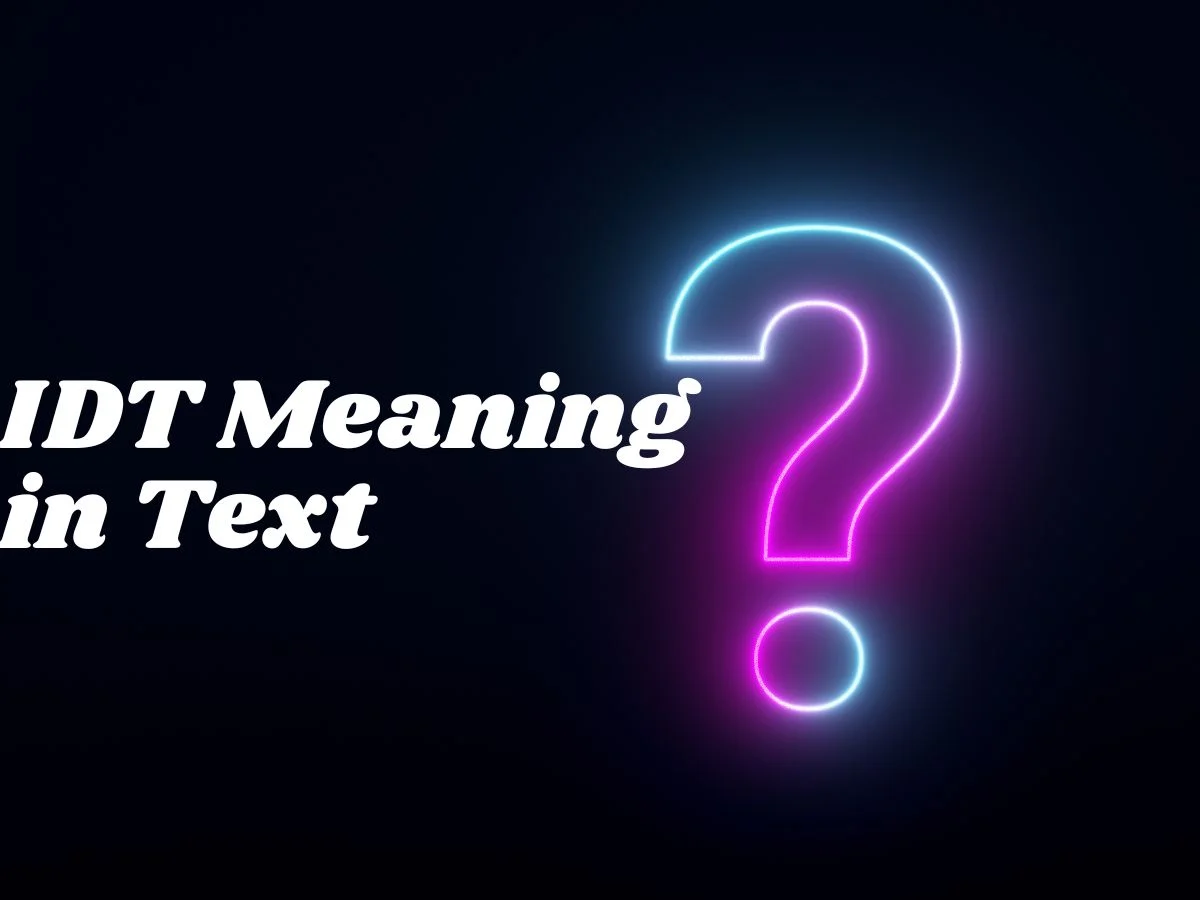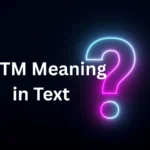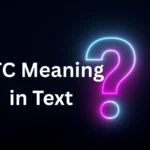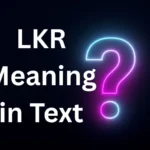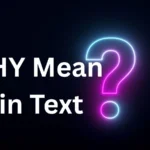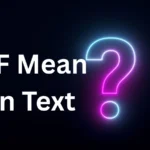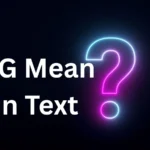In today’s digital age, communication is fast, informal, and full of abbreviations.
One such abbreviation you might have come across is “IDT.”
Whether you’re texting a friend, chatting on social media, or even reading online forums, acronyms like IDT pop up frequently.
But what does it actually mean? Understanding these shorthand expressions is essential because they help keep conversations quick and efficient.
Misinterpreting them can lead to confusion or misunderstandings.
This article dives into the meaning of IDT in text, its origins, how it’s used in different contexts, common misunderstandings, and some alternatives.
By the end, you’ll have a clear grasp of IDT and how to use or interpret it correctly in your daily digital conversations.
Definitions & Meaning
The acronym IDT stands for “I Don’t Think.”
It is primarily used in texting and online chats to express doubt, disagreement, or a differing opinion without elaborating in full sentences.
For example, if someone says, “This movie is the best of the year,” a typical reply might be, “IDT, I found it boring.” Here, IDT conveys polite disagreement efficiently.
Besides “I Don’t Think,” IDT can occasionally stand for other phrases, but in texting, the most common usage is this expression of doubt or polite disagreement.
It functions as a quick way to signal hesitation or a counterpoint in informal digital conversations.
Understanding this meaning is key to interpreting messages correctly.
When someone uses IDT, they aren’t outright dismissing your idea—they’re simply sharing their differing opinion in a brief, casual way.
Origins & History
The use of acronyms like IDT emerged with the rise of instant messaging and SMS texting in the late 1990s and early 2000s.
As character limits and typing speed became significant constraints, users sought shortcuts to express common phrases quickly.
While some acronyms like “LOL” (laugh out loud) and “BRB” (be right back) became widely recognized, IDT remained more niche but prevalent within certain circles, especially among younger demographics and online forums.
The phrase “I don’t think” itself has been a staple of polite disagreement in spoken English for centuries.
IDT is simply its digital evolution—an abbreviation to save time and keystrokes.
Over the past decade, as texting evolved into social media messaging and real-time chat apps, the use of acronyms like IDT became a part of everyday language online, even if not as universally known as others.
It’s a reflection of how language adapts to new communication platforms.
Usage in Different Contexts
Social Media and Texting
On platforms like Instagram, Snapchat, Twitter, or WhatsApp, IDT is often used in casual conversations.
When people want to express skepticism or disagreement without sounding harsh or confrontational, they might say “IDT” instead of writing a longer response. For example:
- Friend: “This recipe is amazing!”
- You: “IDT, it was a bit bland for me.”
It’s a concise way to soften disagreement and keep conversations flowing quickly.
Professional or Formal Contexts
IDT is generally not used in professional emails, reports, or formal writing. Its informal nature makes it unsuitable for work communications.
However, in casual team chats or quick messaging apps used at work (like Slack), some colleagues may use IDT to express opinions briefly.
Still, it’s best to avoid it in formal contexts to maintain professionalism.
Pop Culture and Online Forums
In forums and discussion boards, IDT can help users state opinions or challenge others politely.
It’s part of internet vernacular that helps maintain a conversational tone, preventing heated arguments by keeping disagreements short and less personal.
Common Misunderstandings & Clarifications
A frequent misunderstanding is confusing IDT with other acronyms or misinterpreting its tone.
Because it’s short and direct, some might think IDT sounds dismissive or rude. However, it’s often intended as a gentle disagreement rather than confrontation.
Another confusion arises from IDT’s occasional alternate meanings, such as:
- Integrated Device Technology: A tech company acronym unrelated to texting.
- International Date Line: A geographical term.
Context is crucial to understanding which meaning is intended. In most casual conversations, especially in texting or online chats, IDT means “I Don’t Think.”
Alternatives & Synonyms
If you want to express the same idea as IDT but with different wording, here are some alternatives:
- I don’t believe
- I’m not sure
- I disagree
- I don’t feel
- I doubt it
- Not really
Using these phrases can sometimes sound more formal or polite depending on the tone of your conversation.
Frequently Asked Questions (FAQ)
1. Is IDT only used in texting?
Mostly yes, IDT is common in texting and informal online communication but not in formal writing.
2. Can IDT be used in professional settings?
It’s best avoided in formal professional communications but may be used in casual team chats.
3. Is IDT rude?
Not necessarily. It’s a polite way to express a different opinion but tone depends on context.
4. Are there other meanings for IDT?
Yes, like Integrated Device Technology or International Date Line, but these are unrelated to texting.
5. How do I respond if someone says IDT to me?
You can clarify your point or politely acknowledge their opinion.
6. Is IDT recognized universally?
It’s popular in English-speaking digital communities but may be less known elsewhere.
7. Can IDT be spelled out?
Yes, you can always write “I don’t think” instead of using the abbreviation.
Conclusion
In the fast-paced world of digital communication, abbreviations like IDT play a vital role in keeping conversations quick and efficient.
Standing for “I Don’t Think,” IDT is a useful shorthand to express polite disagreement or doubt in casual texting and social media chats.
While it’s less common in professional or formal contexts, understanding its meaning and usage helps avoid misinterpretations and keeps communication clear.
As with all acronyms, context matters, and knowing alternatives can help you tailor your responses appropriately.
Whether you’re a casual texter or a social media user, recognizing IDT will make your digital conversations smoother and more nuanced.

Jony Johnson is a creative writer and storyteller with a passion for exploring unique ideas through words. His writing style is simple, engaging, and filled with imagination. Jony enjoys crafting articles that entertain, educate, and inspire readers of all ages. From fun riddles to thought-provoking stories, he brings a fresh and relatable voice to every topic. When he’s not writing, Jony loves spending time outdoors, reading mystery novels, and discovering new ways to share creativity with the world. His goal is to make every reader smile and think a little deeper.
